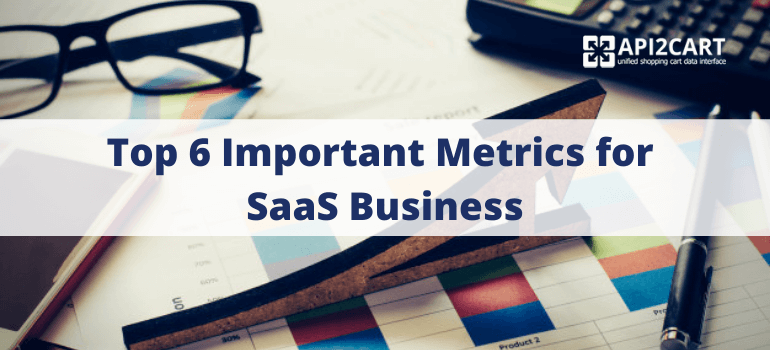
eCommerce has opened doors for all sizes of businesses to play on the global stage. However, to do so, they require relevant software to operate smoothly and automate all of their processes. That is why B2B SaaS solutions became so popular nowadays. We are talking about SaaS providers who work in the sphere of shipping management, marketing automation, order and inventory management, price optimization, etc.
The SaaS companies, however, are also facing competition-related issues in the crowded online space. Therefore, it is essential for businesses in this industry to create a solid B2B SaaS marketing strategy to survive and thrive. Here are 6 important metrics for SaaS business success.
Monthly Unique Visitors and Signups
Monitoring monthly unique visitors is essential for a SaaS company to evaluate its marketing success and reach in terms of audience size. Since you get data from multiple sources, you can measure your marketing efforts on different channels.
Next, you can check the quality of your traffic by analyzing engagement metrics that include visitors' activities while on site. Average time spent on site, pages visited, content download, repeat visits, and related activities are important quality pointers.
How many of the monthly unique visitors actually sign up is vital to the growth of a SaaS company. Your marketing efforts are geared towards increasing signups that ideally will convert to paying customers after a self-tutored trial period.
You can help such prospects and even current users by generating self-help content on how to use your product to enhance your conversion rate.
You need appropriate tools to track your monthly unique visitors, signups, and generate data you can use to improve your marketing strategy.
An excellent tool to use is Google Analytics, as it comes free. However, there are many others like Mixpanel, Adobe Analytics, etc.
Customer Acquisition Cost (CAC)
Your strategy as a B2B SaaS company should take into account the customer acquisition cost. This eventually will have an impact on your profitability.
Using CAC should help you take stock of your growth margins, revenue, and expected profit.
To calculate customer acquisition cost, you divide the total cost of sales and marketing by the number of customers acquired. To optimize this scenario, start by quantifying your customer persona and understand what motivates the customers to buy, how much they are willing to pay, and even what features they value most.
Focus on-site visits that produce leads, how many of these leads, in turn, lead to opportunities, and finally, how many opportunities convert to paying customers.
Next, you need to address the customer acquisition cost payback period to find your break-even point. The sooner you recover acquisition costs, the stronger financially your company will be.
Lead Velocity Rate
Lead velocity rate is a metric for your pipeline growth, assessing how many qualified prospects you are currently striving to convert to actual paying customers. It is the rate in growth percentage of quality leads month over month in real-time.
The key to the lead velocity rate metric is that it is real-time, providing actionable data that can be used to set the company growth plan. Whereas other metrics lag and provide data on what’s been achieved.
Stabilizing the LVR growth rate at 8% per month ensures a steady flow of leads and achievable overall business growth at 100% annually.
Setting realistic lead velocity rate goals for every month and working to hit without a miss will give you a sure-fire metric to peek into the future and estimate your business growth. It is possible to envision the future of your business 12-18 months ahead using this metric.
Average Revenue Per Account (ARPA)
The metric average revenue per account in the SaaS business is the calculation of revenue generated by an account monthly.
Since some customers can have multiple accounts, the metric is sometimes referred to as average revenue per customer (ARPC). This metric is useful in revealing trends in account growth and decline and general evaluation of pricing strategy.
The ARPA metric can be misleading at times if not taken in other metrics like the net MRR growth rate, LTV to CAC ratio, and the MRR rate expansion. ARPA may distort the average through variables in pricing ranges, for example, and give a false positive. That is why it must be assessed alongside other metrics for a holistic picture.
However, ARPA is calculated by dividing the total annual recurring revenue (ARR) by the total number of accounts or by the monthly recurring revenue (MRR) if the monthly metric is required.
Monthly Recurring Revenue (MRR)
Recurring revenue, whether monthly or annual, is vital to the survival and growth of the company and one that must be tracked closely. Without a steady monthly recurring revenue stream, your company is headed for the rocks, and you cannot undertake a financial forecast and planning competently.
A good MRR is also a measure of growth and impetus that will attract the much-needed investor for further capitalization.
The previous means that calculating the monthly recurring revenue is vital for a B2B SaaS business.
The calculation must be done with utmost care starting with a spreadsheet of customers and their subscription data. Extract the subscription figure for the month’s total MRR. However, go a step farther and analyze information by segments for the bigger picture.
The Churn Rate
Churn rate is the percentage of subscribers or customers who stopped using the service during a given period. Whereas some customer churn level, usually at 5-7% annually, is expected, a higher churn puts a massive strain on capital reserves if the business is to maintain revenue.
Unprecedented high churn, especially for B2B SaaS companies if not anticipated or mitigated in time, can quickly sink you.
Work hard at retaining current customers, especially considering new acquisition costs and the impact on company revenues. Assess the reasons why your customers are leaving and promptly address their grievances.
Revise your quality standards and put a strong support strategy in place to meet your customers’ needs promptly and efficiently to earn their loyalty.
A churn rate can be used positively as a wakeup call for improvement and can be turned around to drive MRR growth for the business. How you handle the leaving or about to leave customers will determine your success in stemming churn rate.
Conclusion
The SaaS business is fast gaining momentum, and as more challenges emerge, so will the need for metrics to help with monitoring. There are many more metrics than mentioned here that are industry-specific, and one will have to choose what works best for the company.
Metrics are vital in the running of any business, with SaaS included, as they give the direction of growth trajectory and operating status of the company. Invest in good analytic software to help run your metrics and to provide useful data for decision making.
If you are running a B2B SaaS company and works with retailers, you probably need not only to measure your business performance but also to integrate your solution with multiple eCommerce platforms. For this purpose, you can try to use API2Cart.
API2Cart provides a unified API for integration with multiple shopping platforms. It includes the support of connection with Magento, Shopify, WooCommerce, PrestaShop, 3dcart, etc.
API2Cart has detailed API Docs and more than 100 methods for managing the data. You will have access to products, orders, customers, shipments, and taxes from e-stores.
If you have any questions, please contact our manager right now. Don’t miss your opportunity to save you B2B SaaS company budgets and efforts need for integration development.
Author Bio: Alice Jones works as a freelance research and essay writer for dissertation writing services. She is from San Francisco, CA and completed her master’s degree from the University of San Francisco. The topics Alice loves to write on are business management, marketing, finance, and economics.



